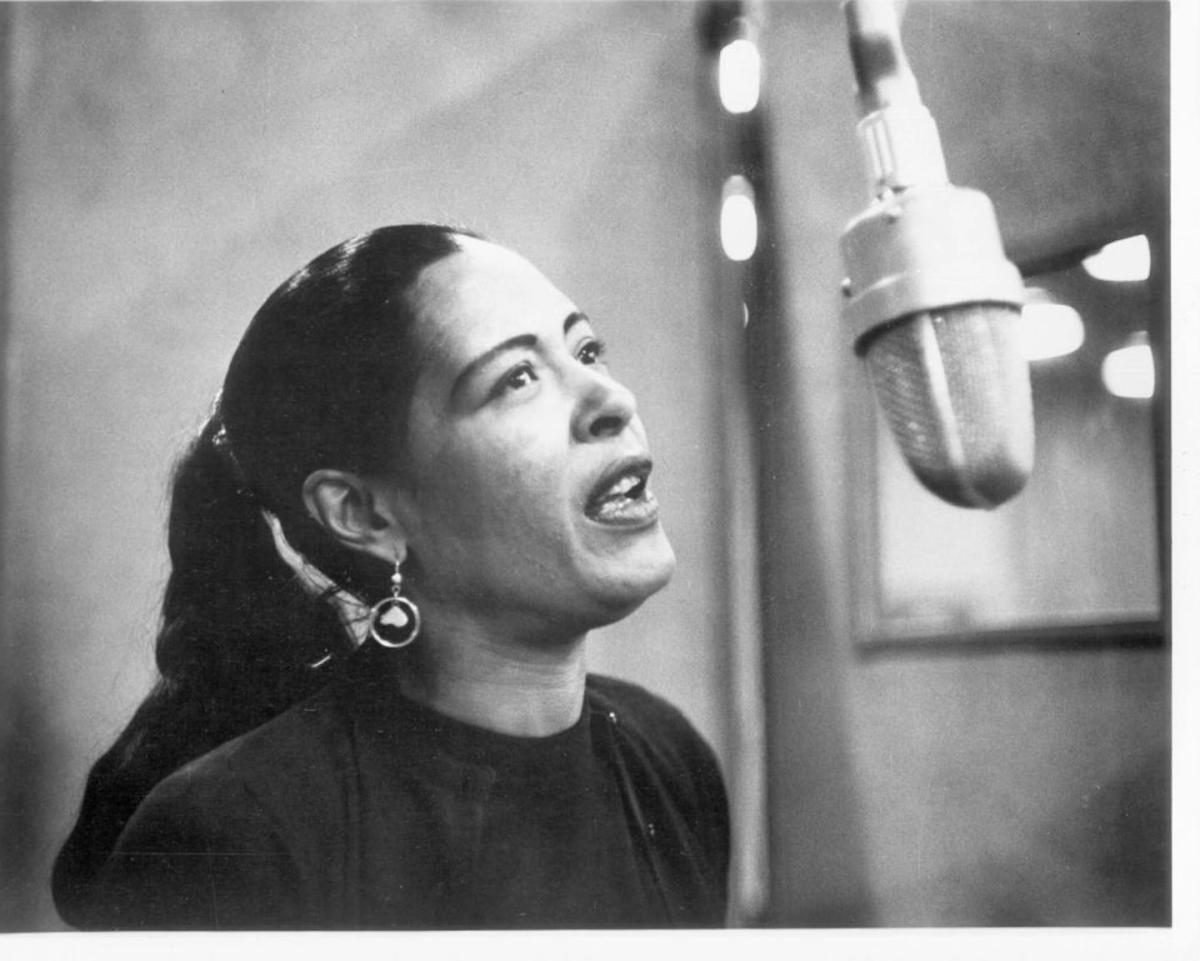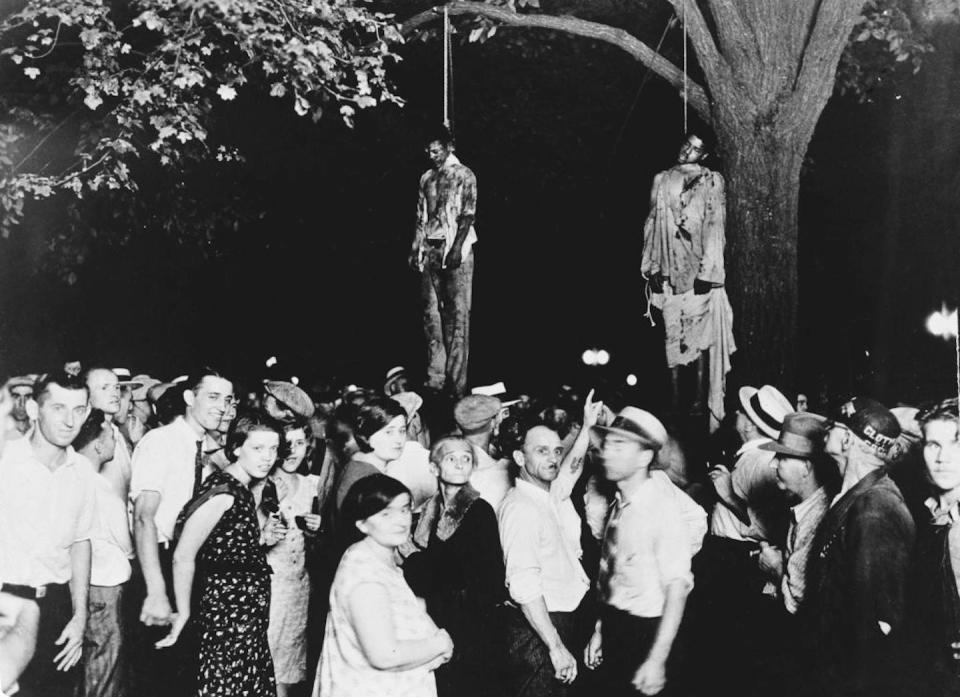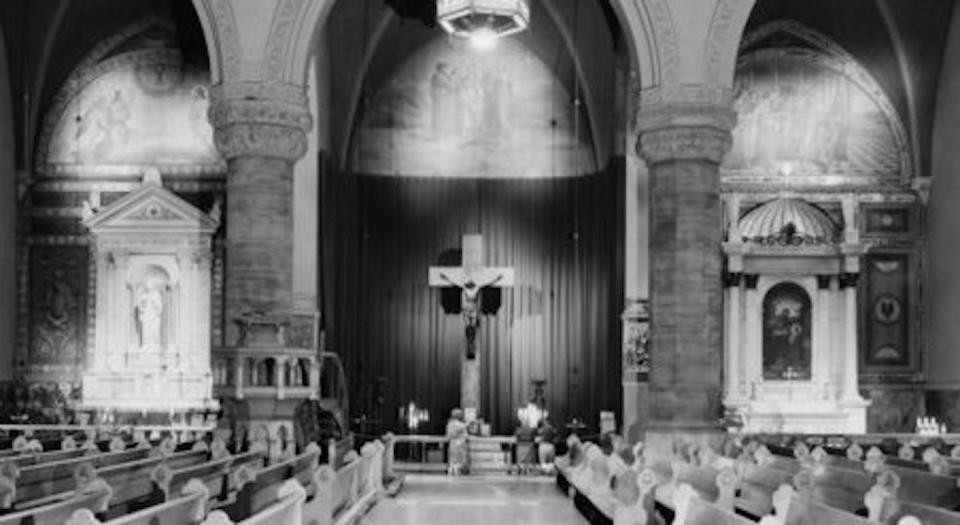Decades after Billie Holiday’s death, “Strange Fruit” is still a burning testimony of injustice – and loyal solidarity with those who suffer

65 years ago, on July 17, 1959, Billie Holiday died at New York’s Metropolitan Hospital. The 44-year-old singer was turned away from a nearby charity hospital for drug abuse and lay for hours on a gurney in the hallway, unrecognized and unattended. Her estate amounted to 70 cents in the bank and a wad of cash she had hidden on her person – her share of the payment for an interview with a tabloid newspaper she had given on her deathbed.
Today, Holiday is considered one of the most influential musicians of all time. Time magazine named her 1939 recording of “Strange Fruit” the song of the 20th century. “In this sad, somber song about lynching in the South,” Time wrote in 1999, “history’s greatest jazz singer grapples with history itself.”
Abel Meeropol, a New York teacher and songwriter who worked under the pseudonym Lewis Allan, wrote “Strange Fruit” after seeing a photograph of a lynching that shocked and haunted him: “Black body sways in the south breeze / Strange fruit hangs from the poplar trees.”
Holiday’s interpretation of Meeropol’s song is as stunning – and haunting – today as it was when it was first recorded. “It hits hard,” wrote columnist Samuel Grafton shortly after the record’s release in 1939. “It’s as if a game of ‘Let’s pretend’ had ended.”
I am a scholar of American religion, literature, and art, and I am interested in how even powerfully secular works draw their energy from religious narratives about justice, injustice, truth-telling, and redemption. Strange Fruit is a fitting example for me.
Unflinching Translation of texts
Like so many composers whose songs Holiday recorded – George and Ira Gershwin, Irving Berlin, Jerome Kern – Meeropol came from a family of Jewish immigrants to the United States who fled anti-Semitic violence in Europe.
Two major migrations shaped America in the early 20th century: from the rural South to the industrial North and from the Old World to the New World. Both were driven in part by a desire to leave racial terror behind.
Together, these migrations enabled some of the most enduring musical collaborations of the 20th century. Thematically, the joint productions of black and Jewish musicians — Broadway productions of “Show Boat” and “Porgy and Bess,” Holiday’s performances with Benny Goodman and Artie Shaw — tended to sidestep the brutal realities of prejudice, focusing instead on the luxuries of ordinary happiness and unhappiness.
“Strange Fruit” was different. The song looks unflinchingly at the “strange fruit” of the title: hanged, burned and mutilated flesh rotting on a tree.
Well into the 20th century, white vigilante groups murdered thousands of black Americans with impunity: they lynched them and then displayed their bodies as a terrorist spectacle.


Meeropol first wrote down the lyrics and music of the song on the back of a cabaret program dated November 13, 1938 – four days after Kristallnacht, the night of murderous anti-Jewish rampages throughout Nazi Germany that became the turning point in the Holocaust.
For Meeropol, a labor activist and secular Jew, black and Jewish Americans marched shoulder to shoulder for freedom from injustice. In another poem, he linked violence against blacks to the persecution of Jews:
I am Jewish.
How can I determine that?
The lynched negro
Reminds me well
I am Jewish.
Black Christ
Just as Meeropol linked prejudices against blacks and Jews, many black Christians also linked their own suffering to that of the Hebrew slaves in the Bible – and to the suffering of Jesus.
According to theologian James Cone, “Black clergy preached more about the death of Jesus than any other subject because they saw in Jesus’ suffering and persecution a parallel to their own experiences with slavery, segregation, and the lynching tree.”
During the decade in which Holiday recorded Strange Fruit, the works of Harlem Renaissance writers WEB Du Bois, Countee Cullen and Langston Hughes all revolved around the figure of the crucified Black Christ.
Most African-American Christians belong to Protestant churches, but Holiday does not. As a child, she was baptized Catholic in a convent, the House of the Good Shepherd for Colored Girls in Baltimore, where she was sent twice by the court. She remained ambivalently Catholic throughout her life.
The filled cross
Protestant churches often display the “empty” cross, which shows Jesus’ instrument of execution, but not his body. The message of the empty cross is resurrection and new life. According to Christian history, Jesus was crucified, buried, and rose from the dead to redeem humanity from sin.
In the Catholic world, one is more likely to find the “filled” cross: the body of Jesus nailed to the wood with outstretched arms, hands and feet. The crucifix emphasizes the agony of Jesus’ death and his solidarity with all who suffer.


The completed cross also conveys the message that the crucifixion of Christ – God in human form – is not a one-time event.
“When (Meeropol) showed me that poem,” Holiday said of “Strange Fruit,” “I liked it immediately” because it “seemed to encapsulate everything that had killed pop.” Her father, jazz guitarist Clarence Holiday, died at age 39 while on tour in Texas. She believed he was denied life-saving treatment because of his race.
Holiday’s “Strange Fruit” evokes the filled cross and is a testament to the fact that lynching is an everlasting reality. “It still depresses me every time I sing it,” Holiday said in her autobiography. “But I have to keep singing it… the things that killed him are still happening in the South.”
Journalist Vernon Jarrett recalled seeing Holiday perform in 1947. She “sang that song like it was real, like she’d just witnessed a lynching,” Jarrett said of “Strange Fruit.” “There was a sense of resignation, like, ‘These people are going to be in power for a long time and there’s nothing I can do about it except put it in a song.'”
Current will
Facing brokenness, rather than overcoming or overcoming it, also describes Holiday’s way of dealing with others in precarious situations. Her Harlem apartment, she said, was a “combination of YMCA, boarding house for penniless musicians, soup kitchen for anyone with a down-on-his-luck story, community center and after-hours bar.”
A 1943 papal encyclical similarly described the church itself as a place of shared pain, consolation and nourishment. Anyone who had no money “could go there and eat,” poet and jazz singer Babs Gonzales recalled of Holiday’s place. “For four years she fed everyone in New York.”
Holiday ended her concerts with “Strange Fruit” from 1939 until the last months of her life. By making the song her signature, she offered solidarity and a faithful testimony to racial violence and injustice, not a cure. But her testament had extraordinary power.
Shortly after the murder of George Floyd in 2020, Bruce Springsteen, a Catholic with “concerns,” compiled a playlist for America. First on his list was “Strange Fruit.”
When asked if he was optimistic about the future, Springsteen responded in the spirit of Holiday: to witness, not to triumph. “I don’t think anyone really knows where we’re going from here,” he told author David Brooks. But everyone “can see now that the status quo is not OK. And that’s progress.”
This article was adapted from The Conversation, a nonprofit, independent news organization that brings you facts and trusted analysis to help you make sense of our complex world. It was written by: Tracy Fessenden, University of Arizona
Read more:
Tracy Fessenden has received grants from the National Endowment for the Humanities, the Henry Luce Foundation, and the American Council of Learned Societies.


